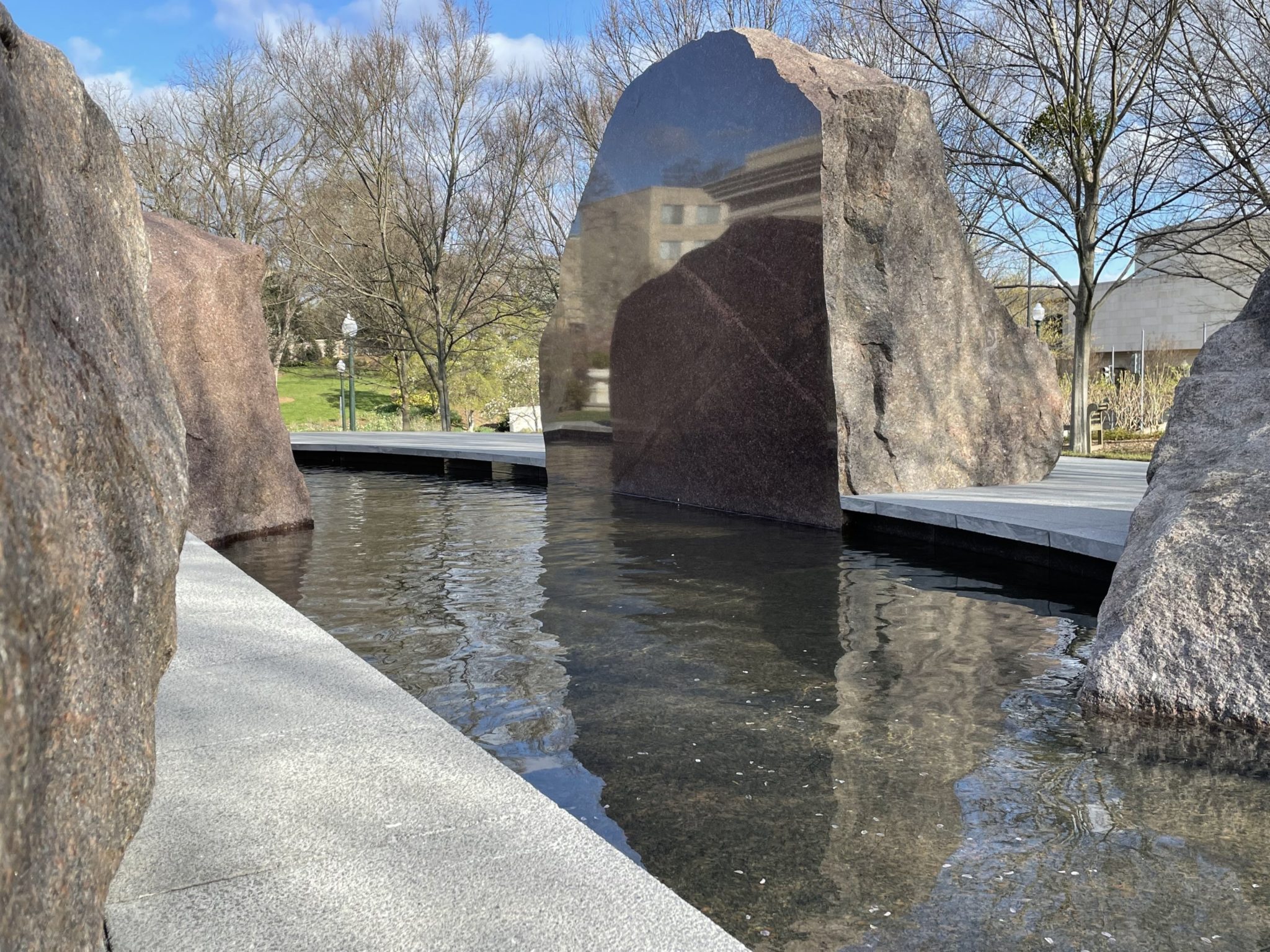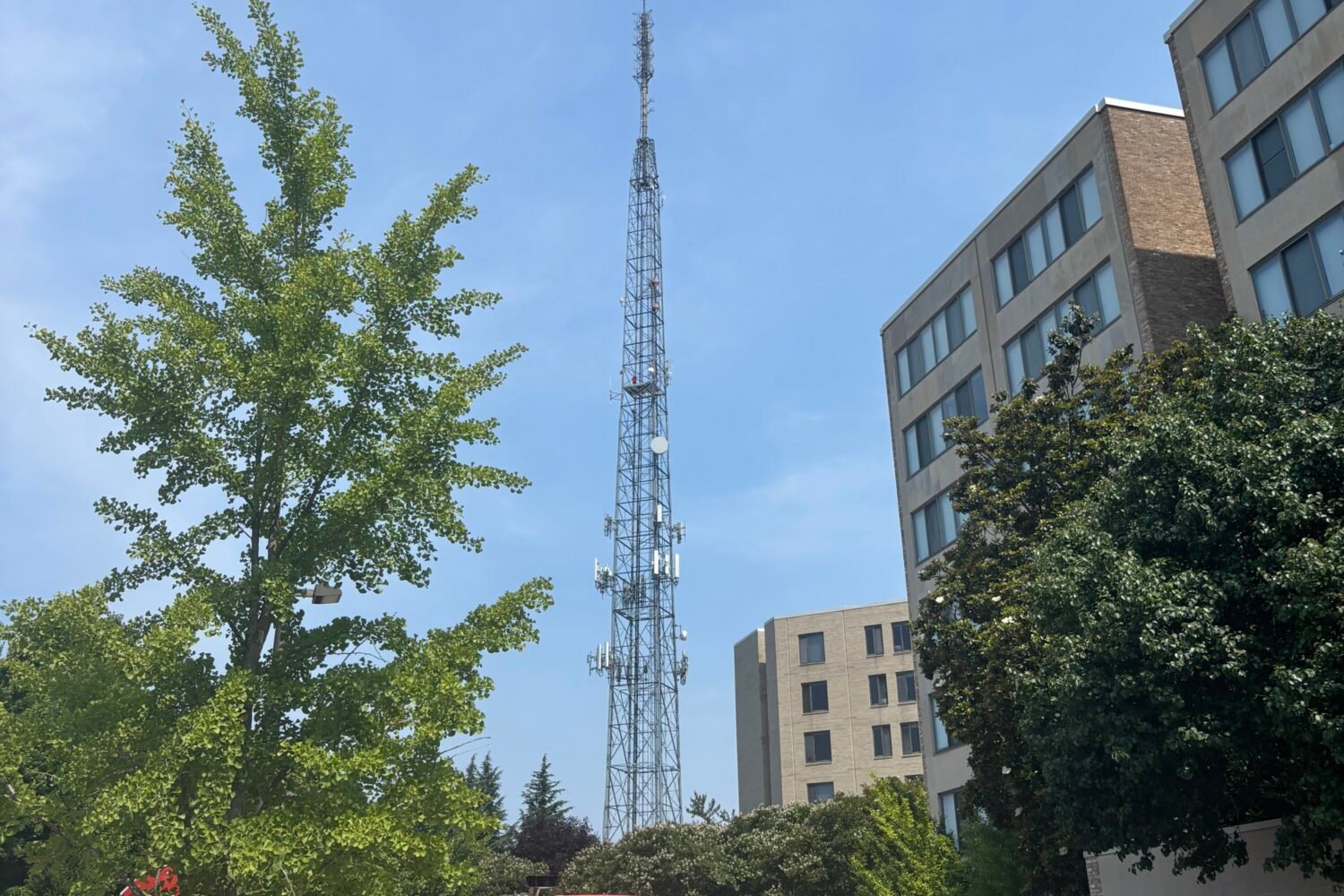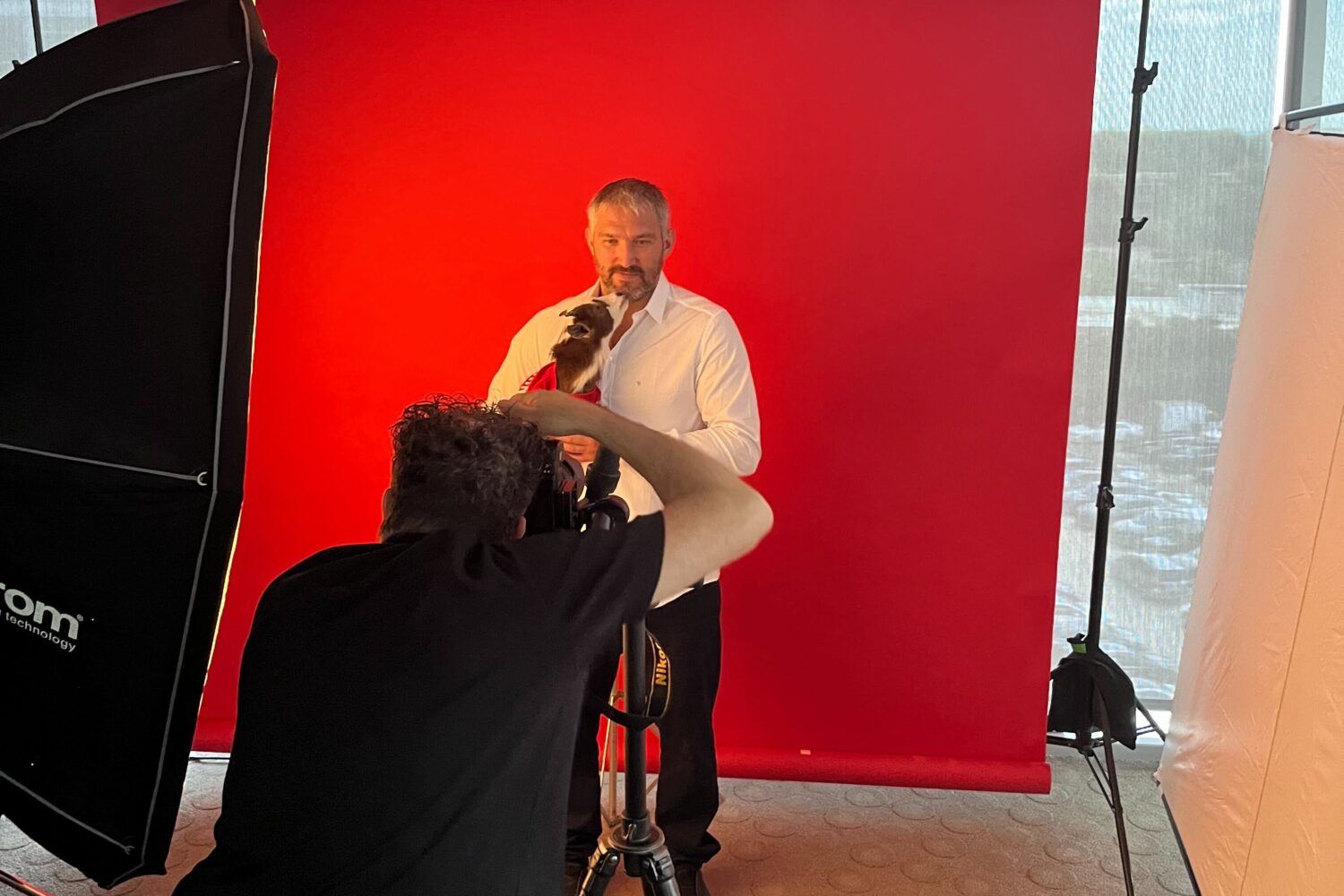Elyn Zimmerman’s massive sculpture once known as Marabar has finally settled into its new home on American University’s campus, where it has been renamed Sudama. Its contemplative boulders were a familiar sight at National Geographic Society’s downtown headquarters from 1984 until last year.
The move began in September and followed several years of indecision over where to relocate the installation—the award-winning artist’s first commissioned large scale work. Canal Park and Navy Yard were both floated but rejected by Zimmerman, who is now 77. She wanted a space that was more secure and also inviting to ducks, who often enjoyed the boulders on NatGeo’s campus. (“I think ducks bring good luck,” Zimmerman told The New York Times in 2021.)
The artist first learned that she’d need to relocate the granite boulders in 2017. A letter from NatGeo explained that its renovation plans for a new entry and events space required their removal but the society wanted to give her the chance to recover them first. In March 2020, the Cultural Landscape Foundation, calling the installation “a source of delight to all who discover the celebrated work,” stepped in to help preserve the artwork.

“I was in despair years ago when I heard that National Geographic was expanding [its] campus,” said Zimmerman at a dedication ceremony this afternoon. “I didn’t know what was going to happen to my sculpture … so I was really heartened by a phone call from [the Cultural Landscape Foundation], whose mission is to preserve works of sculpture architecture.”
The foundation fought to keep the installation in its original location, but eventually Zimmerman, National Geographic, and American University all agreed to relocate the boulders to the university’s campus.

“I came across this site and thought it was just the most perfect spot,” said Zimmerman of the university’s campus, which doubles as an arboretum. “It was really different from where the rocks had been before and yet it had the same kind of quality of occlusion and creating a place, not just creating a thing.”
Aside from the costly logistics of transporting hundreds of tons of stone across town, which National Geographic paid for, there was the question of how the new location would alter the way the boulders interacted with the landscape. “The size and shape of [Marabar’s] pool was changed to work with the new site,” Zimmerman said in an interview with the foundation.
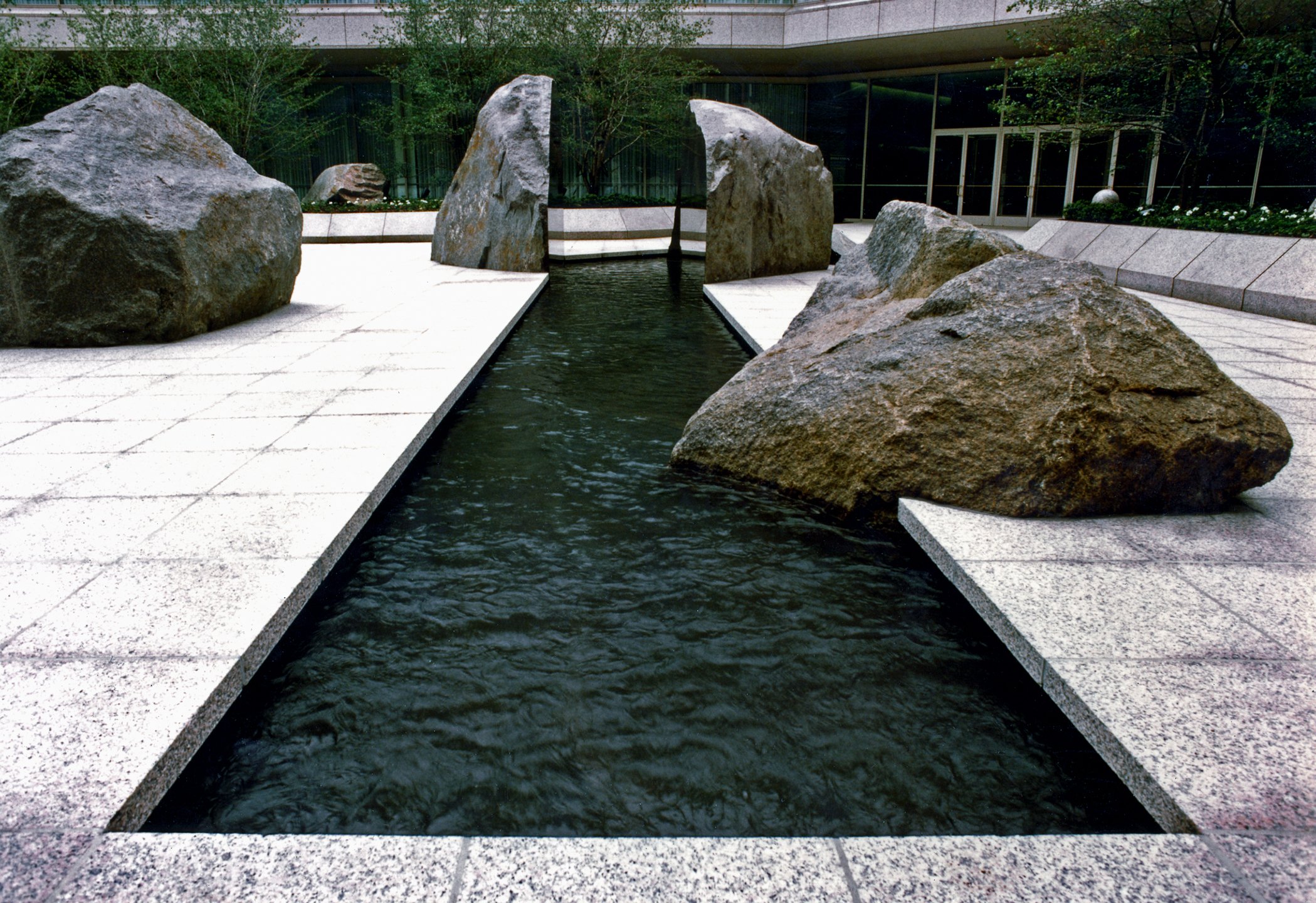
The mammoth boulders now hug a crescent-shaped pool outside the university’s Kay Spiritual Life Center, where, in contrast to their previous downtown setting, they are surrounded by landscaped greens that include cherry trees and daffodils.
“The polished and rough large rocks—the core of Marabar—were positioned slightly differently around the new pool,” Zimmerman said in her interview with the foundation. “Although reminiscent of Marabar, the new setting, and a thorough cleaning and repolishing of worn spots after 40 years made the piece look new and unique so it needed a new title.”
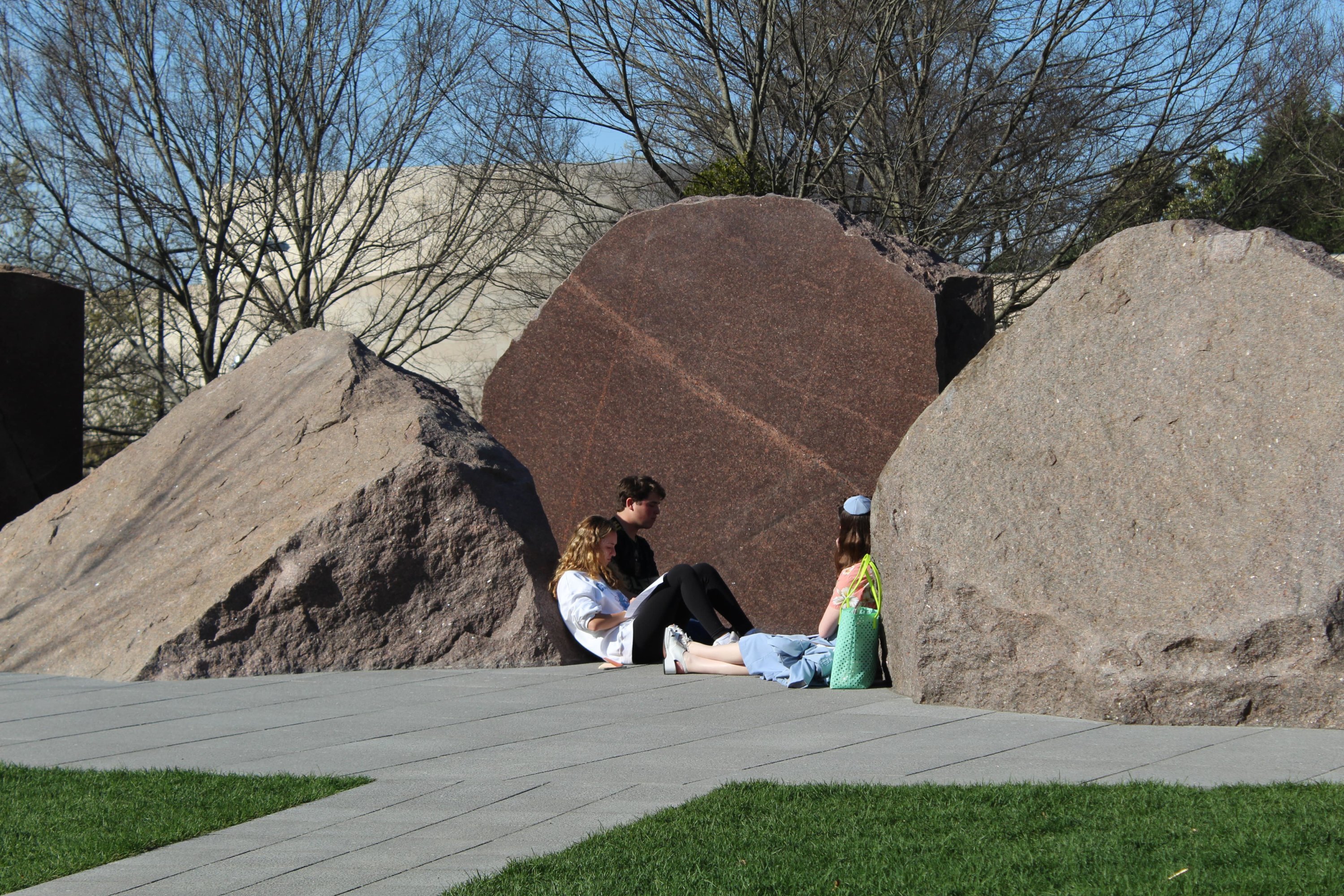
The work’s new title comes from E.M. Forster’s novel A Passage to India, in which he describes Sudama as a polished cave used for religious meditation and chanting. Marabar was also named from the novel.
“Though we regret the loss of Marabar at its original location, we are pleased that its creator, artist Elyn Zimmerman, with the support of National Geographic, retained the ability to control its reconfiguration and relocation to the American University campus,” says Charles A. Birnbaum, the Cultural Landscape Foundation’s president and CEO.


